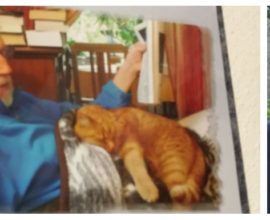Une semaine avec les nouvelles #LBC

Une semaine avec les nouvelles LBC
Introduction
Cette semaine, et ce sera la dernière, je vais changer de méthode pour vous présenter les nouvelles cartes. Je ne vais plus suivre l’ordre alphabétique, présenter parfois plusieurs cartes en mettant en évidence ce qui les rapprochent ou les distinguent ou ce qui fait qu’elles se complètent dans un contexte donné.
Au menu cette semaine
Aujourd’hui: Wf-: Le World Café
Demain mardi: Dans l’ordre d’apparition: Kb- Knowledge Base ;Md- Media on Demand; Py- Playability; Eg- Escape Game
Mercredi: Sw – Shared worspace; Sc ShowCase
Jeudi: Mg- Message; Pr Review
Vendredi: Sa- Self Analysis ;Tc- Team Coaching
Wf: World Café
Introduction
Le Word Café est une méthode déjà ancienne et très bien documentée, je vous donne en référence 3 liens vers des vidéos de présentation (1) en français, (2) en anglais (3) en allemand.
Mon point de vue
Pas plus que d’habitude je ne vais entrer dans le détail de la carte. L’usage que je vois au World Café est en amont de la construction de tout dispositif portant sur un large périmètre et à fort enjeu pour l’organisation et/ou son éco-système
Critique dans le processus est de formuler des questions qui comptent pour les participants (4) réunis et de mettre en place un espace convivial et de sensibiliser (voire former) les hôtes à chaque table à leur rôle de facilitation dans le respect des principes
Principes et déroulement (5)
Concrètement, les participants sont regroupés autour de tables de quatre ou cinq personnes. Ensemble, ils discutent des questions posées par l’animateur du World Café. Des nappes de papier couvrent les tables afin d’y griffonner des idées, de dessiner des liens, de noter des découvertes. Les mots, les dessins, les symboles sont encouragés afin que chacun puisse contribuer au meilleur de lui-même, selon son style.
Des apprentissages, des consensus, des prises de conscience peuvent être générés par les échanges découlant des questions posées au groupe.
Le World Café comporte trois rondes de conversation d’une vingtaine de minutes chacune.
Entre chaque ronde, les participants font un retour sur leurs discussions en grand groupe.
Les personnes changent de table à chaque ronde, sauf une qui reste afin de partager l’essence des conversations précédentes avec les nouveaux participants.
Références:
(1) https://youtu.be/LRBuVIIvELk
(2)a https://youtu.be/YG_6iBcyP7w
(2)b https://youtu.be/bImYMj88b20
(3) https://youtu.be/ekCPJlcYZ0Y
(4) Voir Wikipedia en langue allemande (https://de.wikipedia.org/wiki/World-Caf%C3%A9)
Les bonnes questions sont un facteur de réussite essentiel pour un World-Café. C’est pourquoi une attention particulière est accordée à l’élaboration de ces questions au sein du groupe de planification – formé d’un échantillon représentatif des participants attendus. Les questions doivent susciter l’intérêt. Elles sont formulées simplement, posées de manière ouverte, ont un caractère invitant et doivent susciter la curiosité pour le dialogue.
Dans la pratique, les questions se fondent souvent les unes sur les autres en termes de contenu et de dramaturgie. Lors du développement de plans d’action et de stratégies, la dramaturgie des questions suivante a par exemple fait ses preuves :
la première question a un caractère d’ouverture/de collecte ou d’analyse, afin de rassembler toutes les informations et idées relatives à un champ thématique,
la deuxième question est alors plutôt restrictive et orientée vers l’action, par exemple « Que devrions-nous décider aujourd’hui pour atteindre xy ? ».
A week with the new Learning Battle Cards (#LBC)
Introduction
This week, and this will be the last, I will change my method of presenting the new cards
I will no longer follow the alphabetical order, but will sometimes present several cards, highlighting what makes them similar or different, or what makes them complete in a given context.
or what makes them complement each other in a given context.
On the menu this week
Today: Wf-: The World Café
Tomorrow Tuesday: In order of appearance: Kb- Knowledge Base; Md- Media on Demand; Py- Playability; Eg- Escape Game
Wednesday: Sw – Shared worspace; Sc ShowCase
Thursday: Mg- Message; Pr Review
Friday: Sa- Self Analysis ; Tc- Team Coaching
Wf: World Café
Introduction
The Word Café is an old and very well documented method, I give you as a reference 3 links to presentation videos (1) in French, (2) in English (3) in German.
My point of view
I will not go into the details of the map any more than usual. The use that I see in the World Café is upstream of the construction of any system that covers a large area and has a high stake for the organisation and/or its eco-system
Critical in the process is to formulate questions that matter to the participants (4) gathered together and to set up a convivial space and to sensitise (or even train) the hosts at each table in their role as facilitators in respect of the principles
Principles and process (5)
In concrete terms, the participants are grouped around tables of four or five people. Together they discuss the questions posed by the World Café facilitator. Paper tablecloths cover the tables to scribble down ideas, draw links, note discoveries. Words, drawings, symbols are encouraged so that everyone can contribute their best, according to their own style.
Learning, consensus and awareness can be generated through the exchange of questions posed to the group.
The World Café consists of three rounds of conversation, each lasting about twenty minutes.
Between each round, participants reflect on their discussions in the large group.
People move to a different table in each round, except for one who stays to share the essence of the previous conversations with new participants.
References
(1) https://youtu.be/LRBuVIIvELk
(2)a https://youtu.be/YG_6iBcyP7w
(2)b https://youtu.be/bImYMj88b20
(3) https://youtu.be/ekCPJlcYZ0Y
(4) German version of Wikipedia (https://de.wikipedia.org/wiki/World-Caf%C3%A9)
The right questions are an essential factor for the success of a World Café. Therefore, special attention is given to the development of these questions in the planning group – formed by a representative cross-section of the expected participants. The questions should arouse interest. They are simply formulated, openly posed, have an inviting character and are intended to arouse curiosity about the dialogue.
In practice, the questions often build on each other in terms of content and dramaturgy. For example, the following question dramaturgy has proven successful in the development of action plans and strategies:
The first question has an opening/collection or analytical character in order to gather all information and ideas on a topic,
The second question is then more narrow and action-oriented, e.g. « What would we have to decide today to achieve xy?
(5) Source: https://www.enseigner.ulaval.ca/ressources-pedagogiques/methodes-world-cafe#:~:text=Le%20World%20Caf%C3%A9%20est%20une,sont%20possibles%20et%20pas%20connues.
Eine Woche mit den neuen LBCs
Einführung
Diese Woche, und es wird die letzte sein, werde ich meine Methode ändern, um Ihnen die neuen Karten vorzustellen.
Ich werde nicht mehr der alphabetischen Reihenfolge folgen, manchmal mehrere Karten präsentieren und dabei hervorheben, was sie verbindet oder unterscheidet.
oder was sie in einem bestimmten Kontext ergänzt.
Diese Woche auf der Speisekarte
Heute: Wf-: Das World Café
Morgen, Dienstag: In der Reihenfolge des Erscheinens: Kb- Knowledge Base; Md- Media on Demand; Py- Playability; Eg- Escape Game.
Mittwoch: Sw – Shared worspace; Sc ShowCase
Donnerstag: Mg- Message; Pr Review
Freitag: Sa- Self Analysis Tc- Team Coaching
Wf – Das World Café
Einführung
Das Word Café ist eine alte und sehr gut dokumentierte Methode. Ich verweise auf drei Links zu Präsentationsvideos (1) auf Französisch, (2) auf Englisch und (3) auf Deutsch.
Mein Standpunkt
So wenig wie üblich werde ich auf die Details der Karte eingehen. Die Nutzung, die ich im World Café sehe, ist dem Aufbau jeder Einrichtung vorgeschaltet, die sich auf einen großen Bereich bezieht und für die Organisation und/oder ihr Eco-System viel auf dem Spiel steht.
Kritisch im Prozess ist es, Fragen zu formulieren, die für die versammelten Teilnehmer (4) von Bedeutung sind, und einen geselligen Raum einzurichten und die Gastgeber an jedem Tisch für ihre Rolle als Moderatoren unter Beachtung der Grundsätze zu sensibilisieren (oder sogar zu schulen).
Grundsätze und Ablauf (5)
Konkret werden die Teilnehmer an Tischen mit vier oder fünf Personen zusammengesetzt. Gemeinsam diskutieren sie die vom Moderator des World Café gestellten Fragen. Papiertischdecken bedecken die Tische, um darauf Ideen zu kritzeln, Verbindungen zu zeichnen und Entdeckungen festzuhalten. Worte, Zeichnungen und Symbole sind erwünscht, damit jeder das Beste aus sich herausholen und seinen eigenen Stil einbringen kann.
Durch den Austausch, der sich aus den Fragen an die Gruppe ergibt, können Lernerfolge, Konsens und Einsichten entstehen.
Das World Café besteht aus drei Gesprächsrunden, die jeweils etwa 20 Minuten dauern.
Zwischen jeder Runde geben die Teilnehmer ein Feedback zu ihren Gesprächen in der Großgruppe.
Die Personen wechseln in jeder Runde den Tisch, bis auf einen, der bleibt, um die Essenz der vorherigen Gespräche mit den neuen Teilnehmern zu teilen.
Referenzen
(1) https://youtu.be/LRBuVIIvELk
(2)a https://youtu.be/YG_6iBcyP7w
(2)b https://youtu.be/bImYMj88b20
(3) https://youtu.be/ekCPJlcYZ0Y
(4) Wikipedia https://de.wikipedia.org/wiki/World-Caf%C3%A9
Die richtigen Fragen sind wesentlicher Erfolgsfaktor für ein World-Café. Deshalb wird der Entwicklung dieser Fragen in der Planungsgruppe – gebildet aus einem repräsentativen Querschnitt der zu erwartenden Teilnehmer – besondere Aufmerksamkeit gewidmet. Die Fragen sollen Interesse wecken. Sie sind einfach formuliert, offen gestellt, haben einladenden Charakter und sollen auf den Dialog neugierig machen.
In der Praxis bauen die Fragen inhaltlich und dramaturgisch oftmals aufeinander auf. Bei der Entwicklung von Handlungsplänen und Strategien hat sich beispielsweise folgende Fragedramaturgie bewährt:
Die erste Frage hat öffnenden/sammelnden bzw. analytischen Charakter, um alle Informationen und Ideen zu einem Themenfeld zusammentragen,
die zweite Frage ist dann eher engführend und handlungsorientiert gestellt, z. B. „Was müssten wir heute beschließen, um xy zu erreichen?“
Related Posts
Théories et Pratiques de l’apprentissage situé 58/101
Ohé Seniors! Pourquoi?
Ohé-Seniors (un projet de transition professionnelle des seniors)
Articles récents
Archives
- juin 2025
- mars 2025
- novembre 2024
- octobre 2024
- août 2024
- mai 2024
- mars 2024
- janvier 2024
- décembre 2023
- septembre 2023
- juin 2023
- avril 2023
- mars 2023
- janvier 2023
- octobre 2022
- septembre 2022
- juillet 2022
- mai 2022
- avril 2022
- mars 2022
- février 2022
- janvier 2022
- octobre 2021
- août 2021
- juillet 2021
- mai 2021
- février 2021
- juin 2020
- mai 2020
- avril 2020
- février 2020
- janvier 2020
- décembre 2019
- novembre 2019
- octobre 2019
- septembre 2019
- août 2019
- juillet 2019
- mai 2019
- avril 2019
- mars 2019
- février 2019
- janvier 2019
- décembre 2018
- septembre 2018
- août 2018
- juillet 2018
- juin 2018
- mai 2018
- avril 2018
- mars 2018
- février 2018
- janvier 2018
- décembre 2017
- novembre 2017
- octobre 2017
- septembre 2017
- août 2017
- juin 2017
- mai 2017
- avril 2017
- mars 2017
- février 2017
- janvier 2017
Catégories
- Actualités
- Adaptive Learning
- Allemagne
- Apprendre
- Apprentissage
- Branding
- Business
- Coaching
- Codeveloppement
- Communautés de pratique
- Deep learning
- Design
- Development
- E-Learning
- Ecole
- écologie
- Education
- Europe
- Formation
- Histoire
- IA
- Intelligence articificielle
- LBC
- metacognition
- Non classé
- Orientation
- orientation
- Philosophie
- Poésie
- Réalité Augmentée
- Réalité Virtuelle
- Transition digitale
- WOL





Commentaires récents